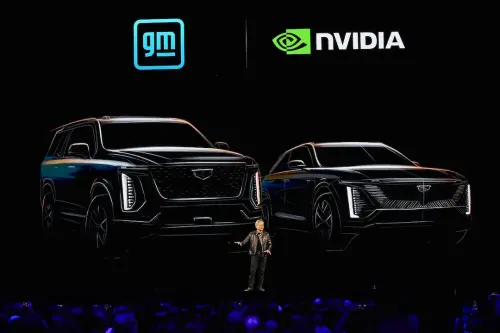On March 18, General Motors announced a partnership with Nvidia to leverage artificial intelligence (AI) chips and software to advance autonomous vehicle technology for its vehicles and enhance operations at its factories. Traditional automakers have faced challenges in bringing autonomous technology to market due to its complexity and high costs. However, this technology has proven beneficial in increasing sales and generating subscription revenue from drivers.
The collaboration aims to utilize Nvidia's AI platforms to develop AI systems for factory planning and train AI manufacturing models. GM plans to implement these advancements in future advanced driver-assistance systems. Financial details were not disclosed, but GM confirmed a strategic partnership with Nvidia for AI utilization in manufacturing and procurement of Nvidia's chips for driver-assistance technology.
Several automakers, including Toyota, Hyundai, BYD, Mercedes-Benz, and Rivian, have joined forces with Nvidia to enhance their autonomous driving capabilities in response to competition from companies like Tesla. GM initially used Nvidia's chips to power its self-driving Cruise robotaxis before transitioning to developing custom chips in-house to lower costs and reduce dependency, focusing on autonomous vehicle (AV) technology for personal use.
GM predicts its driver-assistance technology will generate approximately $2 billion in total annual revenue within five years. Its Super Cruise feature is free for three years, with subsequent subscription options available at $25 per month or $250 annually for customers. Additionally, other companies have utilized Nvidia's platforms for training AI models, demonstrating the industry's increasing integration of AI technology in automotive innovation.
